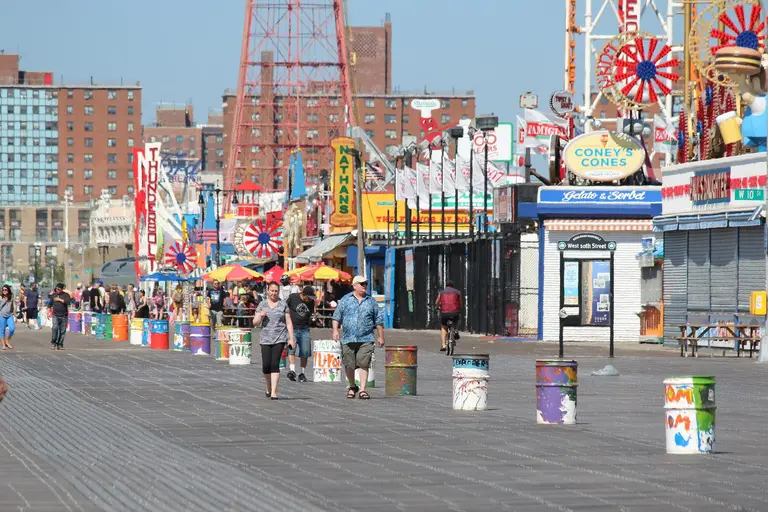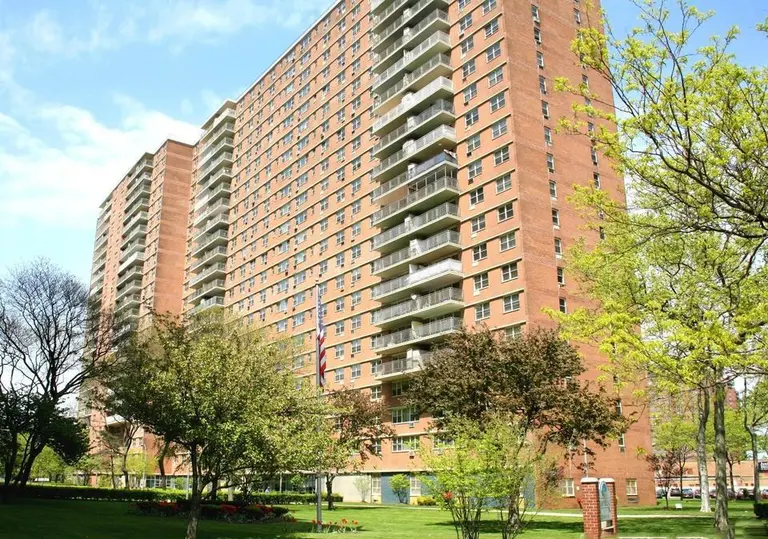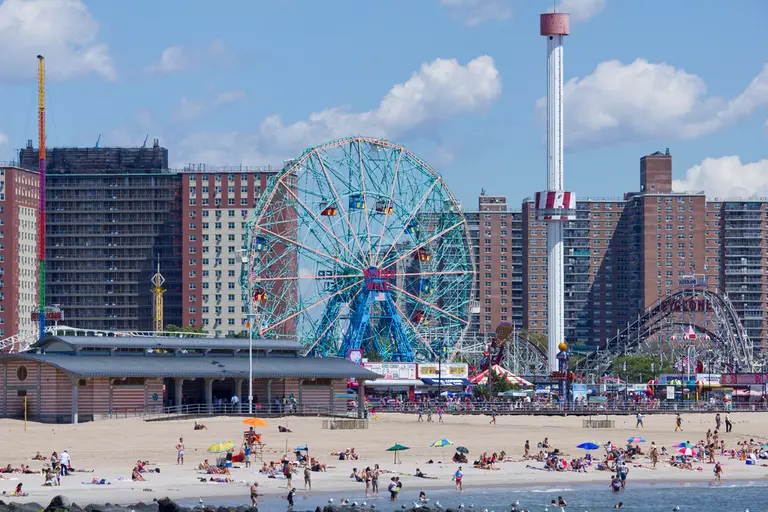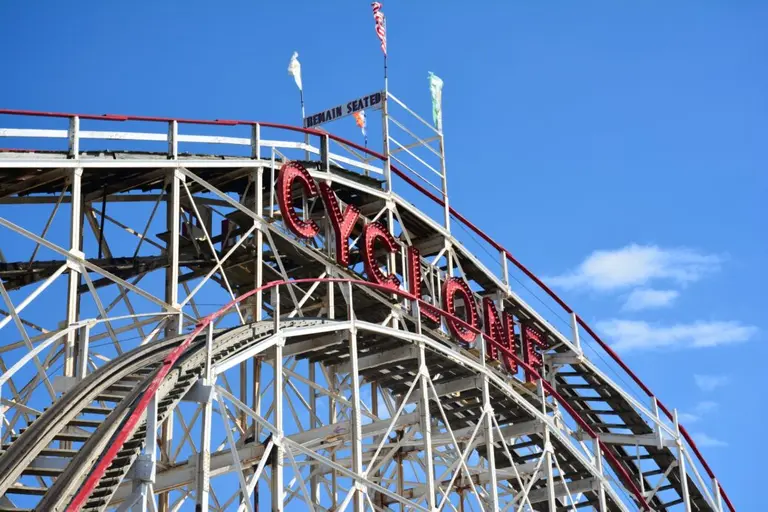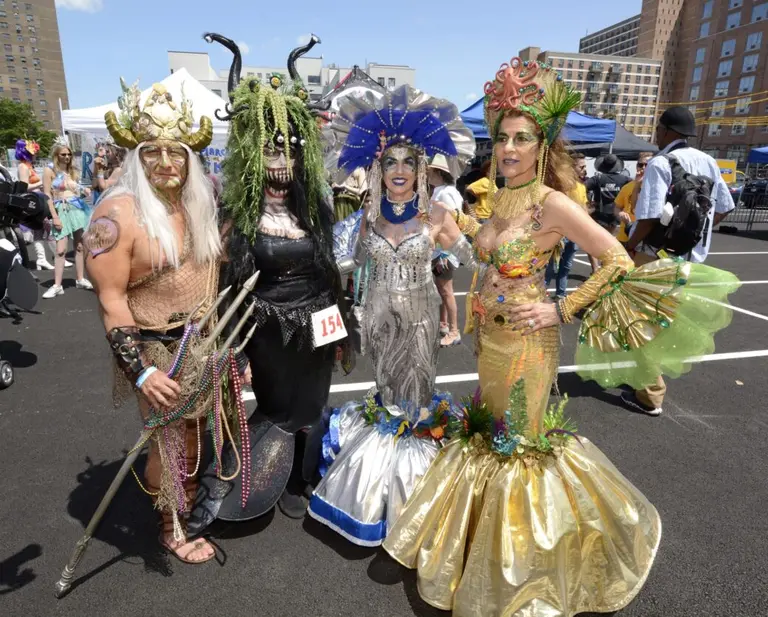Coney Island boardwalk designated as a New York City landmark
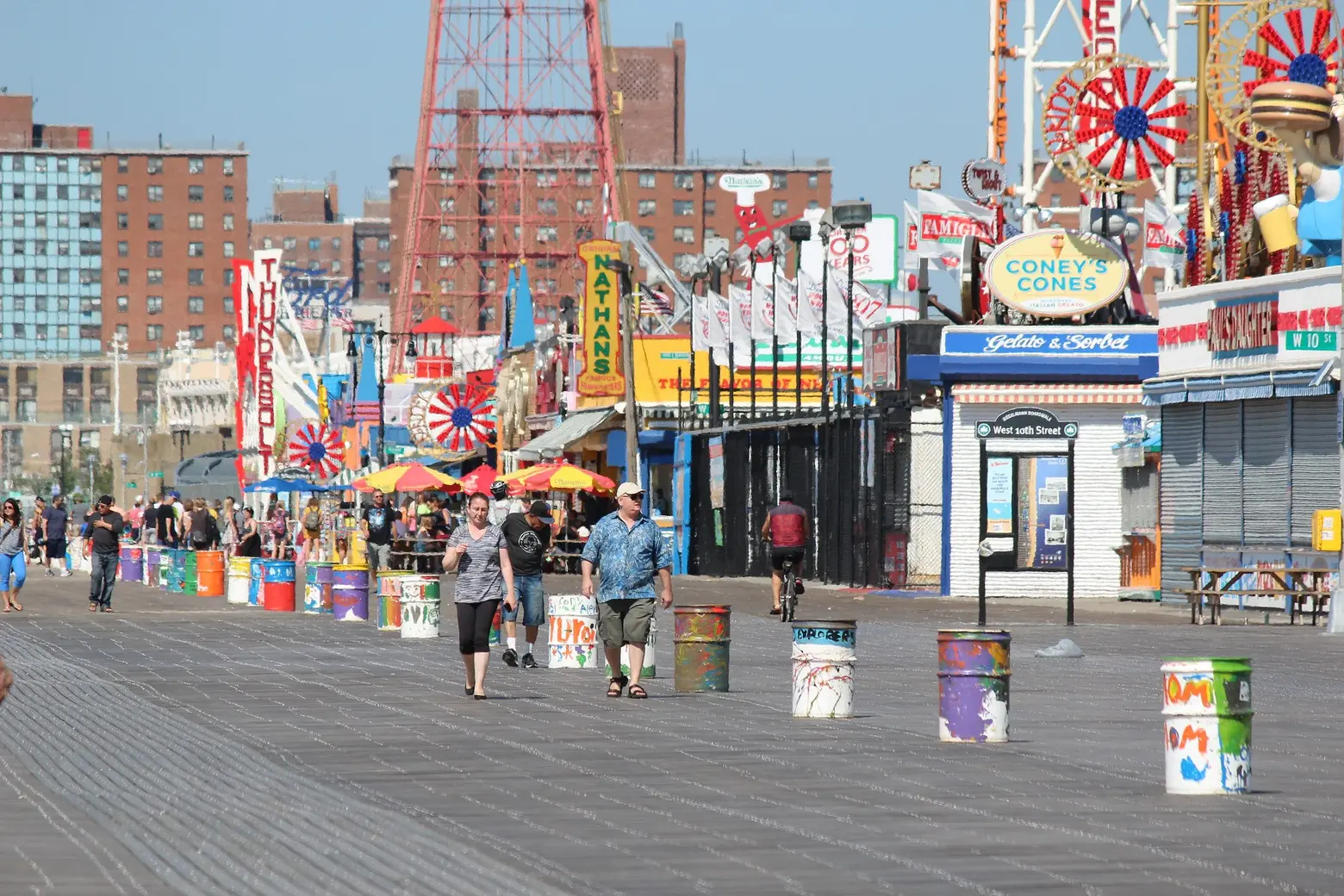
Photo via Shinya Suzuki’s Flickr
Ninety-five years to the day since it first opened, the Coney Island boardwalk has been officially designated by the Landmarks Preservation Commission as NYC’s 11th scenic landmark. The historic designation includes 2.7 miles of public beachfront, stretching from Coney Island’s West 37th Street to Brighton 15th Street in Brighton Beach. Since 2014, Council Member Mark Treyger has pushed for the boardwalk to be landmarked, but the commission repeatedly rejected the proposal.
“The Coney Island Boardwalk is as much a part of the culture as it is a part of the history of New York City,” LPC Chair Meenakshi Srinivasan said in a press release Tuesday. “It is a beloved public space that embodies Coney Island’s democratic spirit and reflects our City’s values of tolerance, inclusivity and equity.”
Formally named the Riegelmann Boardwalk after one-time Brooklyn Borough President Edward J. Riegelmann, the structure was first proposed in 1897, but did not open until May 15, 1923. The boardwalk, designed by Philip P. Farley, is an elevated deck supported by reinforced concrete piles and girders. When the first section opened, between Ocean Parkway and West 37th Street, the boardwalk measured 88 feet wide and 9,500 feet long. Two years after it opened, the boardwalk was expanded by 4,000 feet to Coney Island Avenue. Then, in 1941, Park Commissioner Robert Moses led another expansion, adding 1,500 feet to Brighton Street.
Over the last 100 years, the boardwalk has been consistently repaired and modified, especially in response to climate change. In 2011, the city began replacing the iconic wooden planks with concrete and plastic.
The boardwalk is only the city’s 11th scenic landmark, which can be city-owned parks or other landscape features. Three others are also in Brooklyn–Ocean Parkway, Eastern Parkway, and Prospect Park, all of which were designed by Frederick Law Olmstead. Though he didn’t design the boardwalk, the Commision felt it’s essentially the final piece of his Brooklyn landmarks. “He believed that the government’s duty is to enable this pursuit of an open society and commonplace civilization, and Coney Island is an example of this,” said Commissioner Adi Shamir-Baron, explaining that the boardwalk is a place that represents all people and New York’s progressive values.
The designation not only includes the boardwalk itself, but its light fixtures, railings, Steeplechase Pier, and, interestingly, sand below. It ensures that the boardwalk and these elements cannot be torn down and will be replaced and/or renovated in the event of a storm. However, it doesn’t necessarily ensure that the wooden boards would be replaced in-kind. Back in 2008, Mayor Bloomberg had several sections replaced with plastic and concrete planks. In the case of scenic landmarks, changes fall under the jurisdiction of the Public Design Commission, with the LPC only offering an advisory stance.
Nevertheless, as Brooklyn Borough President Eric Adams said of today’s news:
The same wooden walkway that inspired artists as diverse as F. Scott Fitzgerald and Beyoncé still inspires millions of people who enjoy its unique character. By designating the Riegelmann Boardwalk as a scenic landmark, the Landmarks Preservation Commission is protecting for future generations an institution that defines Brooklyn as a destination unlike anywhere else in the world, honoring the legacy of former Borough President Edward J. Riegelmann. This landmarking is a landmark achievement for the communities of Coney Island and Brighton Beach, from the leadership of Council Members Deutsch and Treyger to the tenacity of longtime residents who made their voices count.
And to the excitement of some, the designation came in time for the annual July 4th hot dog-eating contest.
RELATED:




